| |
| |
30 September 2021 |
“The past is not dead...” No Time
To Die reviewed
|
|
|
007 MAGAZINE Chief Writer LUKE G.
WILLIAMS reviews the 25th James Bond film No Time To Die and argues
that for all its pretensions to provide an emotional climax to the Daniel
Craig as 007 era, it is a film that feels curiously flat and contrived…
|
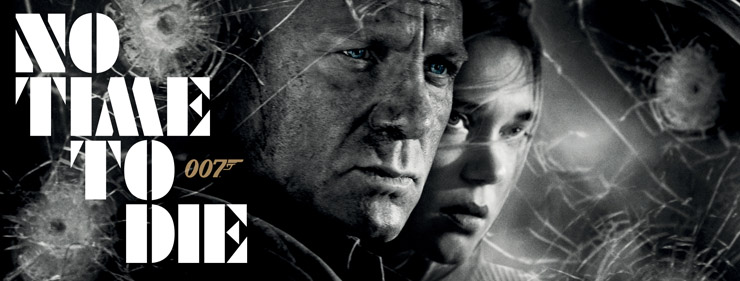 |
|
The Daniel Craig 007 era
has tried to offer us things that many hard-core 007 fans have long wished
the series could provide – chief among them the concepts of continuity and
consistency, both in terms of narrative, mood, and personnel, as well as
an over-arching storyline and narrative that extends across multiple
films.
The laissez-faire approach of past 007 epics to such matters has long been
a source of frustration. Although From Russia With Love served – in
many ways – as a direct sequel to Dr. No, the links between the
original Ian Fleming novels have been treated with scant respect over the
years. Most notably, the brilliant narrative thread woven by Fleming from
THUNDERBALL through THE SPY WHO LOVED ME, ON HER MAJESTY’S SECRET SERVICE
and YOU ONLY LIVE TWICE to THE MAN WITH THE GOLDEN GUN was carelessly
jettisoned by EON and a golden opportunity missed. |
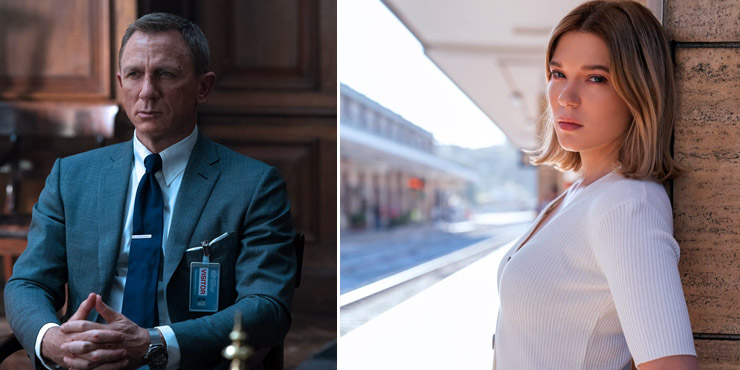 |
|
Among the other glaring
two-finger salutes flung in the direction of continuity by 007 producers
over the years was the fact that Bond’s widow, Tracy, was barely
referenced in Diamonds Are Forever, the film that immediately
followed her cinematic death; the fact Felix Leiter changed guises and
actors with every appearance he made in the series until 1989, and the
oddity that Ernst Stavro Blofeld didn’t recognise 007 in OHMSS,
despite having met him two years earlier in You Only Live Twice.
The Craig era has sought to right these flaws by creating an over-arching
narrative stretching across five films which pays homage to the obsession
within modern film franchises and TV shows for ‘back story’, emotional
‘complexity’ and consistent ‘universe building’.
The problem is that for such an approach to work it needs to be planned
and executed with precision, deftness, and forethought.
Quite simply, this has never happened with the Craig films, which have
effectively consisted of a series of standalone films upon which
continuity has been uncomfortably foisted and shoehorned in as the films
have gone along, rather than existing as part of a coherent and
pre-prepared grand design. |
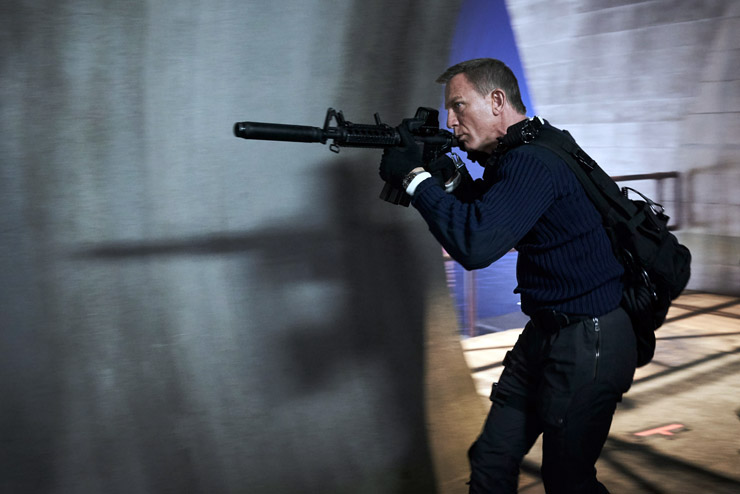 |
|
The apotheosis of this
approach - in which the producers have sought consistency and continuity
while never actually having the vision to look further ahead than the film
they are currently working on - is No Time To Die, a muddled mess
of an overlong movie which nevertheless serves as an appropriate epitaph
for the maddening inconsistency of the films featuring Craig’s uniformly
excellent performances as 007.
No Time To Die is not without merits, most of them technical and
aesthetic. The direction of Cary Joji Fukunaga coupled with the
breathtaking cinematography of Linus Sandgren are dazzling, while Daniel
Kleinman’s main title sequence is a further visual masterpiece on a now
supreme CV.
The majority of the cast are also excellent. Craig oozes grizzled, wounded
charisma in his final appearance as Bond, Lashana Lynch proves charming
and quick witted as ‘new 007’ Nomi, Ana de Armas delivers a winning turn
as CIA agent Paloma, and well-known series’ regulars Ralph Fiennes (M),
Naomie Harris (Moneypenny), Ben Whishaw (Q), Jeffrey Wright (Felix Leifer)
and Rory Kinnear (Tanner) all deliver impeccable performances. |
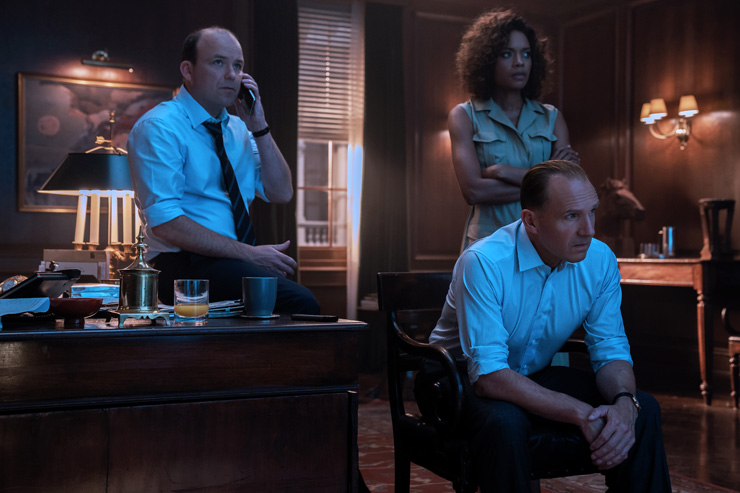 |
|
Crucially, however, the
villains are something of a disappointment. Christoph Waltz’s Blofeld
underwhelms once again and Rami Malek, although sinister and very
watchable, struggles to make much of an under-written role. Sadly, the
genuinely disturbing impact of his first appearance – in a flashback to
Madeleine Swann’s childhood - is never matched in the rest of the film.
A further issue is that the writing of the Bond/Madeleine relationship is
simply not strong enough to create sufficient convincing chemistry between
the characters. Lea Seydoux delivers a technically assured performance but
– like Craig – her performance seems to exist in an emotional vacuum.
And herein lies the rub; No Time To Die is technically incredible,
but emotionally it never resonates as it should. The screenplay - for
which Fukunaga is credited alongside series’ regulars Neal Purvis and
Robert Wade - is simply never engaging or sharp enough to provide the
moments of humanity that the slew of twists, shocks and surprises built in
should provide. As a consequence when these big emotional moments do
arrive they feel flat and contrived, to say nothing of self-indulgent. |
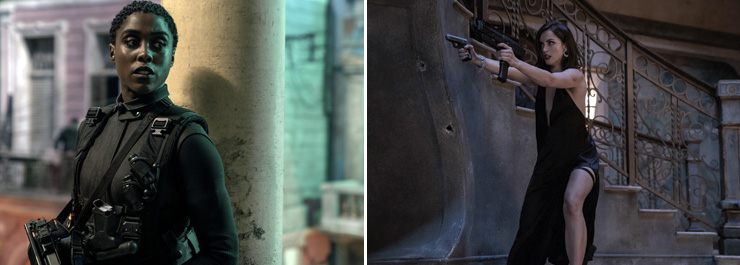 |
|
Some will doubtless argue
that the ‘revolutionary’ way that some of these twists challenge and defy
the usual codes of the Bond canon make No Time To Die some sort of
daring masterpiece, but I would beg to differ.
None of the canon challenging moments in the film bother me in theory –
it’s the fact they are executed so poorly and with such a self-conscious
eye on being ‘edgy’ and ‘different’ that causes them to fail to
emotionally resonate.
If ever there was an apt visual metaphor for the failure of this film to
emotionally connect it is the opening gun-barrel sequence - a bloodless
affair that fades into a shot of an icy cold landscape. For all its
desperate striving for an emotional response from its audience (you can
almost hear the producers and writers willing the audience to cry come the
climax) this is a film that fails to engage the emotions in the same way
that it succeeds in stimulating the visual senses.
The fact the film harks back to and utilises musical cues and a key line
of dialogue from On Her Majesty’s Secret Service is the ultimate
indication that this is a Bond film whose emotional texture is ersatz and
second hand, rather than genuine. The same can be said for moments or
tropes in the film that seem lazily lifted or borrowed from other films –
Kill Bill and Logan, to name but two influences. |
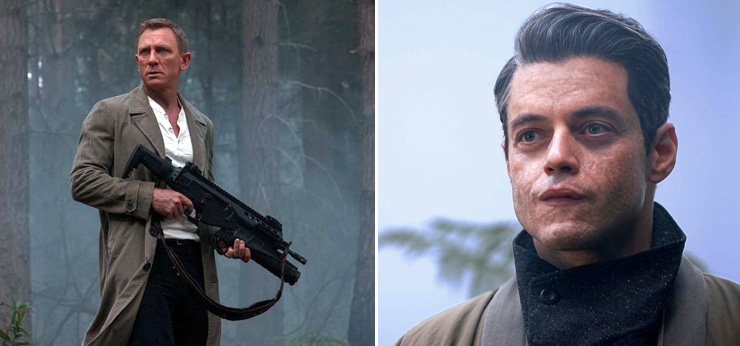 |
|
To borrow a line of
dialogue from No Time To Die, “The past is not dead.” This is even
more the case with James Bond films, which are surrounded by so much
historical baggage.
I’m all for a realistic and gritty approach to Bond, but somewhere along
the line a lot of the old panache of the character, and certainly the
stunt-work, has been lost. The shadow of Jason Bourne hangs over
every action sequence here, and frustratingly No Time To Die fails
to provide any action set-pieces or fight scenes that really get the pulse
racing.
True, the Craig era has been tonally consistent – unlike, say, the Connery
era, which lurched at times uncomfortably between the genres of realism
and espionage, space fantasy and finally action-comedy.
However, ultimately, it has been an era which has failed to live up to the
massive promise of the explosive, compelling and quite brilliant Casino
Royale, way back in 2006. By comparison to Martin Campbell’s film,
No Time To Die is flabby, overlong, and ultimately unsatisfying.
|





